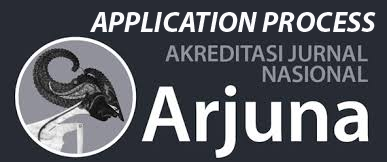Penyuluhan Perawatan Bayi Berat Badan Lahir Rendah (BBLR) untuk Meningkatkan Kapasitas Ibu Nifas dalam Perawatan Neonatal
DOI:
https://doi.org/10.57214/jpbidkes.v3i2.178Keywords:
LBW, health education, postpartum mother, neonatal careAbstract
Background: Low Birth Weight Infants (LBW), defined as babies born weighing less than 2,500 grams, are one of the leading causes of neonatal mortality in Indonesia. The lack of postpartum mothers’ knowledge about LBW care contributes to the low survival rate of these infants. WHO data (2022) shows that 15% of babies worldwide are born with LBW, while in Indonesia, the figure reaches 7.1% (Ministry of Health RI, 2023). Objective: This activity aims to enhance postpartum mothers' capacity in caring for LBW infants through structured and practice-based health education. Methods: The community service was conducted on May 7, 2025, at RSUD Padjonga Dg Ngalle, Takalar. The method included a pre-test, delivery of educational material, practical sessions, and a post-test. Thirty postpartum mothers participated under the guidance of lecturers and health professionals. Evaluation focused on participants' knowledge, practical skills, and behavioral changes.Results: The results showed a significant increase in participants’ knowledge (from 26.7% to 83.3% answering more than 80% of the post-test questions correctly). Around 90% of participants were able to correctly perform kangaroo mother care techniques. Moreover, 85% of participants reported increased confidence in caring for their LBW babies at home after the session. Conclusion: This health education activity was effective in improving the knowledge, skills, and confidence of postpartum mothers in caring for LBW infants. The program supports efforts to reduce neonatal mortality and empowers mothers as the primary caregivers in home-based neonatal care.
References
Darmstadt, G. L., Bhutta, Z. A., Cousens, S., Adam, T., Walker, N., & de Bernis, L. (2015). Evidence-based, cost-effective interventions: How many newborn babies can we save? The Lancet, 365(9463), 977–988.
Darmstadt, G. L., Bhutta, Z. A., Cousens, S., Adam, T., Walker, N., & de Bernis, L. (2024). Evidence-based, cost-effective interventions: How many newborn babies can we save? The Lancet, 365(9463), 977–988.
Dinas Kesehatan Provinsi Sulawesi Selatan. (2024). Profil kesehatan Provinsi Sulawesi Selatan 2014. Makassar.
Effendy. (1997). Dasar-dasar keperawatan kesehatan masyarakat (pp. 232–243). Jakarta: Buku Kedokteran EGC.
Eze, C. N., Ebuehi, O. M., Brigo, F., Otte, W. M., & Igwe, S. C. (2015). Effect of health education on trainee teachers’ knowledge, attitudes, and first aid management of epilepsy: An interventional study. Seizure: European Journal of Epilepsy, 33, 46–53. https://doi.org/10.1016/j.seizure.2015.10.014
Haque, S. E., Rahman, M., Itsuko, K., Mutahara, M., & Kayako, S. (2016). Effect of a school-based oral health education in preventing untreated dental caries and increasing knowledge, attitude, and practices among adolescents in Bangladesh. BMC Oral Health, 16, Article 44. https://doi.org/10.1186/s12903-016-0202-3
Kementerian Kesehatan Republik Indonesia. (2023). Profil kesehatan Indonesia tahun 2023. Jakarta: Kemenkes RI.
Maryunani, A. (2023). Buku saku asuhan bayi dengan berat badan lahir rendah. Jakarta: TIM.
Maulana, H. D. J. (2017). Promosi kesehatan. Jakarta: EGC.
Nurarif, A. H., & Kusuma, H. (2016). Asuhan keperawatan praktis berdasarkan penerapan diagnosa NANDA, NIC, NOC dalam berbagai kasus. Yogyakarta: Mediaction.
Sanadhya, Y. K., Thakkar, J. P., Divakar, D. D., & Pareek, S. (2014). Effectiveness of oral health education on knowledge, attitude, practices and oral hygiene status among 12–15-year-old schoolchildren of fishermen of Kutch district, Gujarat, India. Issues in Mental Health Nursing, 35(2), 99–105. https://doi.org/10.5603/IMH.2014.0022
Setyo, M., & Paramita, A. (2015). Pola kejadian dan determinan bayi dengan berat badan lahir rendah (BBLR) di Indonesia tahun 2013. Jurnal Kesehatan Masyarakat, 13(1), 1–10.
Titaley, C. R., Dibley, M. J., & Roberts, C. L. (2010). Factors associated with non-utilisation of postnatal care services in Indonesia. Journal of Epidemiology and Community Health, 64(10), 827–831.
World Health Organization. (2022). Preterm birth. https://www.who.int/news-room/fact-sheets/detail/preterm-birth
Downloads
Published
How to Cite
Issue
Section
License
Copyright (c) 2025 Jurnal Pengabdian Bidang Kesehatan

This work is licensed under a Creative Commons Attribution-ShareAlike 4.0 International License.







